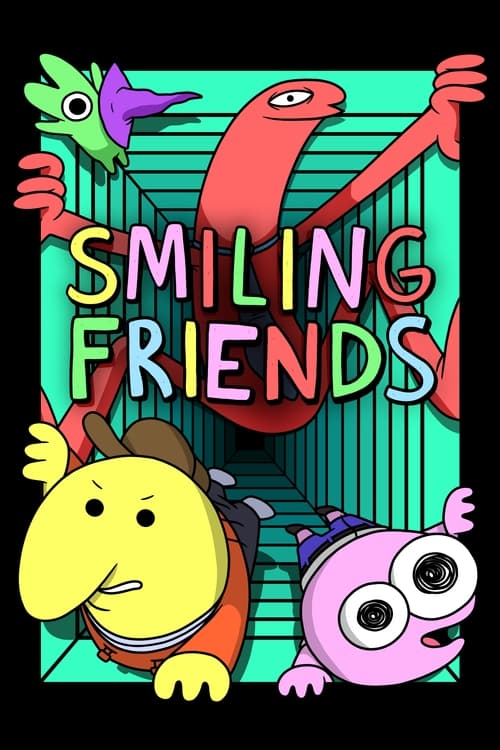
Ask Your Own Question
What is the plot?
In the opening scenes of "The Great War, Season 2: 1915 - Stalemate," the narrative sets the stage for the ongoing conflict of World War I, focusing on the grim realities of trench warfare. Soldiers are shown in muddy, cramped conditions, struggling with the psychological toll of constant bombardment. The camera pans over the desolate landscape, highlighting the barbed wire and craters that mark the battlefield. The emotional weight of despair and fatigue is palpable as soldiers write letters home, their faces etched with worry and longing.
As the episode progresses, we are introduced to key military leaders who are grappling with the stalemate on the Western Front. General Sir John French and his staff are depicted in tense strategy meetings, debating the next course of action. The pressure mounts as they discuss the need for a breakthrough, but the reality of heavy casualties looms over their decisions. The internal conflict among the leaders is evident, with some advocating for a more aggressive approach while others caution against further losses.
The narrative shifts to the front lines, where we see the daily lives of the soldiers. A group of men, including Private Thomas and Sergeant Harris, share their fears and hopes during a rare moment of downtime. Their camaraderie is tested as they confront the harsh conditions and the constant threat of enemy fire. The emotional strain is highlighted through their conversations, revealing their motivations to survive and return home to their families.
A pivotal moment occurs when a new offensive is planned. The soldiers are briefed on the upcoming attack, and the tension is thick in the air. The leaders emphasize the importance of this operation, promising that it could turn the tide of the war. As the men prepare, we see their mixed emotions--some are eager for action, while others are filled with dread. The scene captures the fear of the unknown as they gear up for battle.
The attack begins with a massive artillery barrage, shaking the ground and creating a cacophony of sound. The soldiers charge out of the trenches, and the chaos of battle unfolds. The camera follows Private Thomas as he navigates through the smoke and debris, witnessing the horrors of war firsthand. The sequence is intense, with explosions and gunfire creating a visceral experience. Thomas's internal struggle is evident as he fights to maintain his composure amidst the chaos.
As the offensive progresses, the soldiers face fierce resistance from the enemy. The narrative captures the brutal reality of combat, with graphic depictions of injuries and loss. Thomas and his comrades push forward, but the enemy's defenses are formidable. The scene is filled with tension as they attempt to breach the enemy lines, only to be met with heavy fire. The emotional toll of watching friends fall is portrayed through close-ups of Thomas's anguished expressions.
In a critical moment, Thomas makes a decision to help a wounded comrade, risking his own safety. This act of bravery highlights his internal conflict between self-preservation and loyalty to his fellow soldiers. The scene is charged with emotion as he drags his friend to safety, showcasing the bonds formed in the face of adversity.
The offensive ultimately fails, leading to a retreat. The soldiers return to the trenches, exhausted and demoralized. The aftermath of the battle is depicted through the somber expressions of the men as they process their losses. The leaders are shown grappling with the consequences of their decisions, questioning the effectiveness of their strategies. The emotional weight of defeat hangs heavy in the air, and the sense of hopelessness deepens.
As the episode draws to a close, the focus shifts to the broader implications of the stalemate. News reports highlight the ongoing struggles on various fronts, emphasizing the global scale of the conflict. The final scenes depict the soldiers reflecting on their experiences, with a sense of uncertainty about the future. The emotional resonance of their sacrifices is palpable, leaving viewers with a haunting reminder of the cost of war.
What is the ending?
In the ending of "The Great War," season 2 titled "1915 - Stalemate," the narrative culminates in a tense standoff on the Western Front. The soldiers face the grim reality of trench warfare, with no clear victor in sight. The emotional toll of the war weighs heavily on the characters, leading to a sense of despair and futility. The episode concludes with a poignant reflection on the sacrifices made and the ongoing struggle for survival amidst the chaos of war.
As the final scenes unfold, the camera pans over the muddy, scarred landscape of the battlefield, littered with remnants of conflict. The sounds of distant artillery fire echo, a constant reminder of the war's presence. Soldiers huddle in their trenches, their faces etched with exhaustion and fear. Among them is Private Thomas, who grapples with the loss of his comrades and the haunting memories of battle. His internal conflict is palpable as he questions the purpose of their fight.
In another trench, Sergeant Miller tries to maintain morale among his men, but the weight of despair is evident. He recalls the dreams of glory they once held, now overshadowed by the grim reality of stalemate. The camera captures his furrowed brow and clenched fists, symbolizing his struggle to keep hope alive.
As night falls, the scene shifts to a quiet moment where the soldiers share stories of home, their voices barely above a whisper. This camaraderie offers a brief respite from the horrors surrounding them, yet the underlying tension remains. The flickering light of a small fire illuminates their faces, revealing a mix of determination and resignation.
The climax of the episode arrives with a sudden attack. The soldiers brace themselves as the sound of gunfire erupts, and chaos ensues. The camera captures the frantic movements of the men as they scramble for cover, their expressions a blend of fear and resolve. In the midst of the chaos, Private Thomas makes a split-second decision to save a fellow soldier, showcasing his bravery despite the overwhelming odds.
As the dust settles, the aftermath reveals the heavy toll of the conflict. The camera lingers on the faces of the surviving soldiers, their eyes reflecting the pain of loss and the uncertainty of what lies ahead. Sergeant Miller stands amidst the wreckage, his shoulders slumped in defeat, yet a flicker of determination remains in his gaze.
The episode concludes with a haunting silence, the battlefield now a graveyard of dreams and aspirations. The final shot captures the horizon, where the sun sets over the war-torn landscape, symbolizing both an end and a continuation of the struggle. The fate of the main characters is left uncertain, embodying the ongoing nature of war and its impact on those who endure it.
Is there a post-credit scene?
In the second season of The Great War, titled "1915 - Stalemate," there is no post-credit scene. The episodes conclude with a focus on the events and themes of the war, emphasizing the emotional and physical toll on soldiers and civilians alike. The narrative wraps up each episode without additional scenes after the credits, maintaining a somber tone reflective of the historical context. The series aims to provide a comprehensive understanding of the experiences during World War I, rather than including light-hearted or extraneous content in post-credit sequences.
What were the key battles featured in the 1915 Stalemate episode?
The episode highlights significant battles such as the Second Battle of Ypres and the Battle of Gallipoli, showcasing the intense fighting and the strategic stalemate that characterized the year.
How did the introduction of poison gas impact the soldiers' experiences in 1915?
The use of poison gas during the Second Battle of Ypres created a terrifying new element of warfare, leading to panic among soldiers, causing severe injuries, and altering the psychological landscape of the battlefield.
What role did the Ottoman Empire play in the events of 1915 as depicted in the series?
The series portrays the Ottoman Empire's involvement in the Gallipoli Campaign, highlighting their strategic defenses and the challenges faced by Allied forces, as well as the internal struggles within the Ottoman military.
How did the experiences of soldiers on the front lines differ from those at home during 1915?
The episode contrasts the harrowing conditions faced by soldiers in the trenches, including mud, disease, and constant danger, with the lives of families at home, who dealt with rationing and the emotional toll of having loved ones at war.
What were the emotional and psychological effects of the stalemate on the soldiers depicted in the episode?
The episode delves into the despair and frustration of soldiers as they grapple with the futility of trench warfare, leading to feelings of hopelessness, anxiety, and a longing for home amidst the relentless fighting.
Is this family friendly?
The Great War, season 2 titled "1915 - Stalemate," contains several scenes and themes that may be considered objectionable or upsetting for children or sensitive viewers. Here are some aspects to be aware of:
-
Graphic War Imagery: The series depicts the harsh realities of World War I, including battle scenes that may show injuries, death, and the aftermath of combat, which can be distressing.
-
Emotional Trauma: Characters experience significant emotional and psychological stress due to the war, including grief, loss, and despair, which may be heavy for younger audiences.
-
Death and Loss: The narrative includes the deaths of soldiers and civilians, which can be portrayed in a poignant and impactful manner, potentially upsetting for sensitive viewers.
-
Violence: There are scenes of violence related to warfare, including explosions and combat, which may not be suitable for all viewers.
-
Depictions of Suffering: The show addresses the suffering of soldiers and their families, including the impact of war on mental health, which can be intense and thought-provoking.
These elements contribute to the overall serious tone of the series, making it more appropriate for older teens and adults rather than younger children.











